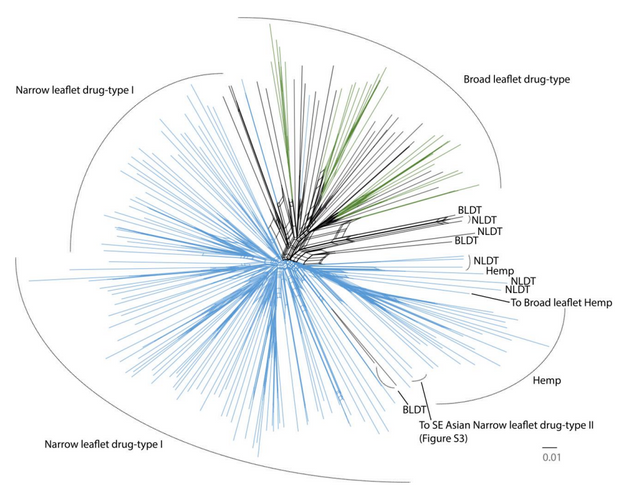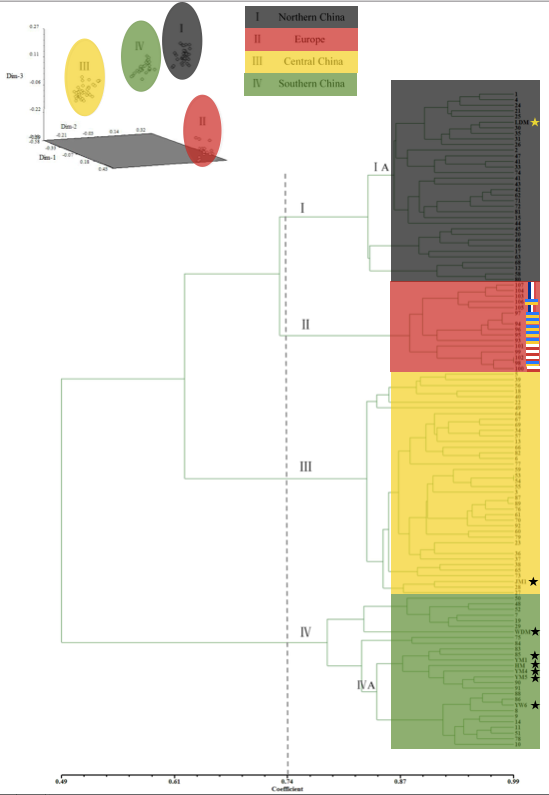China's untaped Cannabis germplasm collection
Last year alone, 1133 peer-reviewed studies containing the keyword “cannabis” were published and indexed in PubMed. That is a literal ton of research, and since cannabis research touches on so many areas of knowledge, I will most likely not commit to reading or attempt to understand them all. What I can commit to doing however is to review some of the current cannabis research that has not necessarily made the headlines elsewhere. As a start to this endeavor, let us examine research published last year on the preprint server bioRxiv by several University of Colorado scientists and other renowned labs from the mile high state and California. In their paper, Ryan Lynch and colleagues collected next-generation sequencing data from a wide pool of accessions to provide us with the most exhaustive study of Cannabis genomics yet published — over 300 strains of medical/recreational cannabis along with European hemp and a couple of Chinese hemp samples. Their results are illustrated in the phylogenetic network below, which uses the natural classification of cannabis and splits it into Broad and Narrow leaflet types. The names of the strains are included in this high resolution image.
Several very interesting findings emerged from this paper: first off, and in contrast to recent research by Sawler et al 2015 and Henry 2015, the authors demonstrate that psychoactive cannabis strains harbour a higher level of genetic variation than hemp cultivars. This would indicate that the underground movement has been rampantly introducing and maintaining genetic variation under prohibition, in contrast to regulation in hemp.
Again in contrast to the previous two studies, Lynch found that narrow-leaflet cannabis strains (our colloquial ‘sativa’) were more closely related to Hemp than the broad-leaflet types (our colloquial ‘indica’). This is cool because it shows that one must be open to paradigm shifts when additional light is cast upon existing dogmas. As studies like these keep emerging, we will likely come to know much more about the origin, evolution, and interrelationship between the four ‘domesticated’ cannabis subspecies.

Extending the discussion on hemp, an older study from last year by several Chinese agricultural scientists and published in PLoS One, looked at the interrelationship between Chinese and European Hemp. This is really quite interesting when considering the assertion examined above (psychoactive cannabis vs. hemp genetic diversity). The rasta colored tree and multi-dimensional clustering graphs below illustrate the amount of genetic diversity present in Chinese Hemp, the 4th broad group of cannabis subspecies (in addition to the three groups discussed by the all authors mentioned above and many others).

Note the origins of the European cultivars are indicated by the flag of the country of origin, including France, Ukraine and Poland. The stars indicate cultivated Chinese hemp so most samples come from feral populations. It is pretty clear from the figures above that there is a lot of genetic variation present in Chinese Hemp that has not been accounted for in other studies of cannabis population genetics. Whether the feral samples represent escapees from cultivation or are the actual ancestor of the cultivated varieties remains as another pressing and exciting question that will likely be tackled in the near future.
This Story was originally posted on Canlio.com and can be retrieved here